Canon EOS 5D Mark III vs Canon EOS 5D Mark IV
The ultimate practical family portrait photographers review
The wait is over! Canon have announced the 5D Mark IV, the successor to the hugely popular Canon EOS 5D Mark III. I confess to purchasing my Mark III the day it was released (2nd March 2012), making my camera body, four & a half years old! Being a full time working portrait photographer, it’s fair to say my Mark III has been put through it’s paces, including even being run over at one stage, yet it’s still going strong. The only signs of ageing, are purely cosmetic in nature, unlike it’s owner (who knew the body feel as well as show signs of age at 40) – but I digress. Suffice to say, the announcement was cause for celebration!
With the first retail shipment not due in Australia until September 8th, lucky me managed get my hands on a pre-release Canon 5D Mark IV model thanks to the lovely folks at Canon and Team Digital in Perth. My new friend and I, we had some fun together!
In the short time since the Mark IV has been announced the internet is already alive with thousands of discussions, reviews and opinions on the technical specs. While I do like tech specs, I’m a practical girl at heart and for me the proof is in the pudding. I want to put the camera through it’s paces in my work as a family photographer and find out how it handles compared to my trusty Mark III. Specifically, I wanted to know, is it worth me (or you) spending the big dollars to upgrade to the Mark IV?
Will I get a return on my investment, or am I better off sticking my my Mark III?
There are a few areas that I’m particularly keen to assess;
- Is it better to shoot with, does if focus faster or more accurately with fast moving subjects or when the light is low?
- Will I get the shot I want faster, or, will I nail more and miss less saleable portraits in my sessions?
- Will the increased sensor size mean I comfortably shoot a little wider and crop in later? After all I shoot busy little people and it can really pay at times to shoot a little wide and crop in later.
- Are the files coming out easier to work with, a nicer colour, better detail in the shadows (dynamic range) allowing me to present an even better finished product to my clients?
- Will all this make my shoots and/or post processing easier and faster, ultimately saving me time?
It’s real world shoot off time.
I’ve put the cameras to the test, side by side in three different portrait sessions. Same photographer, same lenses and settings, same subjects, location & light. I simply kept swapping out the camera bodies!
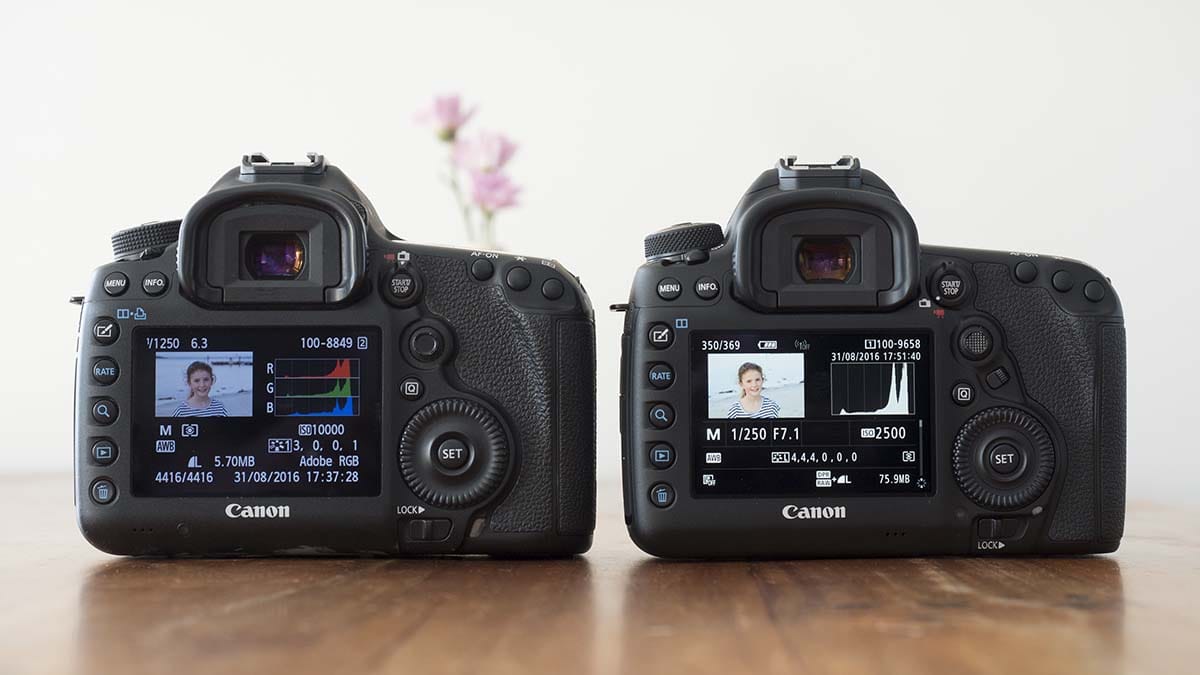
Overall first impression out of the box.
Holding my new friend, comparing it to the old, and already I can see my affections being swayed. Yet I love that it has the same look and feel as the Mark III, I admit to not having the time to learn anything that’s vastly different from what I have now. Familiarity with a few extra bells and whistles, works for me!
The new retina touch LCD screen is great. Perhaps I’m a retina screen snob these days but side by side you can’t compare the brightness, vividness of the new screen to the old.
A touch screen is also a great addition, I can’t see myself using it to focus and shoot while taking stills, it’s a little clunky, but for changing settings it’s a breeze, I can see it becoming my go to method for fast setting changes. For shooting on video on a tripod however, I can see it’s really going to be game changer with focus shifting.
And lastly – it’s lost weight, only around 60g, but this isn’t the biggest looser – despite the public weigh in I subjected them too. The 60grams is noticeable in your hand and any drop in weight is gratefully accepted! It’s also slightly smaller in size according to the specs, and while my eye or hands didn’t really pick any noticeable differences there, it’s fairly obvious in their line up photos.

The Canon EOS Mark III vs The Canon EOS Mark IV | At dusk.
The full monty outdoor sunset family shoot, with fast kids, back light, fading light and grandparents.
These sessions are busy, I don’t want to wrestle with my gear, I’m busy enough wrangling the family. I need fast accurate focus, I don’t want to miss shots while my camera hunts for focus. And I really don’t want to download the photos and find I’ve just missed focus of the perfect shot, because the kids being kids, moved out the focal point too fast for the camera to adjust.
I shoot exclusively in one shot AF with my Mark III, manually selecting my focus point for every image using the multi controller dial on the back. In this session I plan to test both this focus mode as well as some others, like AI servo and AI face detect.
I started my session as I often do, with harsh backlighting from the sun filtering between trees behind my subjects. I kept the camera on one shot AF as the backlight can be tricky for focus. My Mark III would very occasionally have troubling locking in, or I would find had locked on a tree instead. The Mark IV performed brilliantly, every image was tack sharp, and focus felt fast, accurate and solid (no hunting).
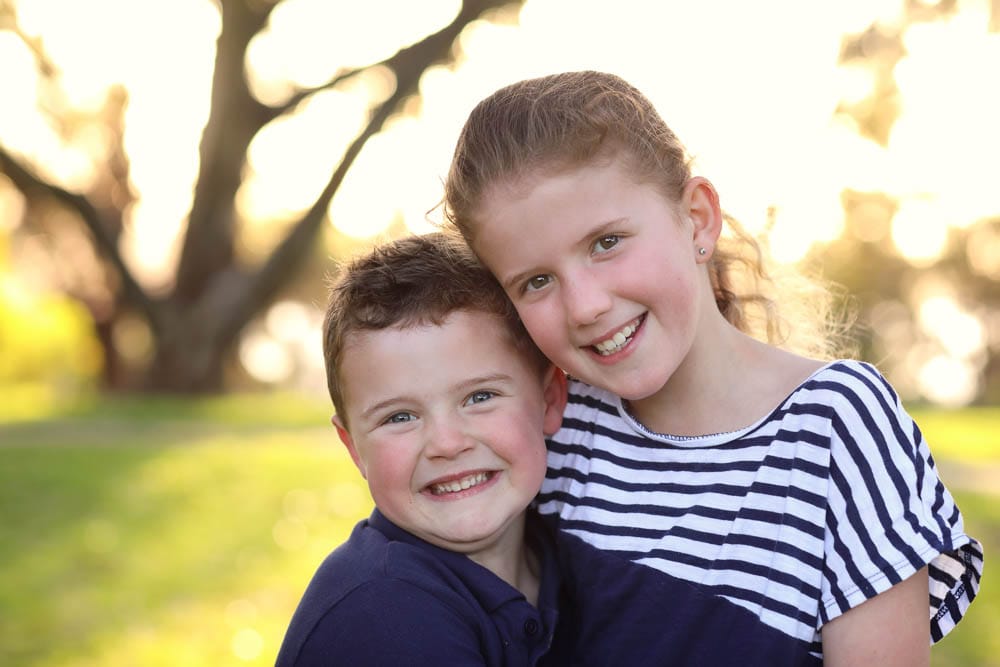
Canon EOS 5D Mark IV: 85mm, f3.2, ISO640, 1/320sec
Next I tested out AI face tracking (new to the Mark IV) & AI servo, I had the kids race towards me and let the camera pick them out and hold focus. I simply composed for first photo and clicked away as they ran, letting the camera do the rest. As a family photographer, I’ve always loved the sound of AI servo. Yet, sadly I’ve never ever been able to get it to work reliably enough to use it in my paid sessions. The Mark III never seemed to hold focus so I’ve continued to rely refocusing really really fast – it’s safe to say I’ve missed a lot of shots! The Mark IV results? Despite having a busy tree backdrop, every single shot from the Mark IV was in focus. Every. Single. One. Tack sharp, even though I was shooting at f3.2 with the 85mm lens and lovely nice narrow depth of field.
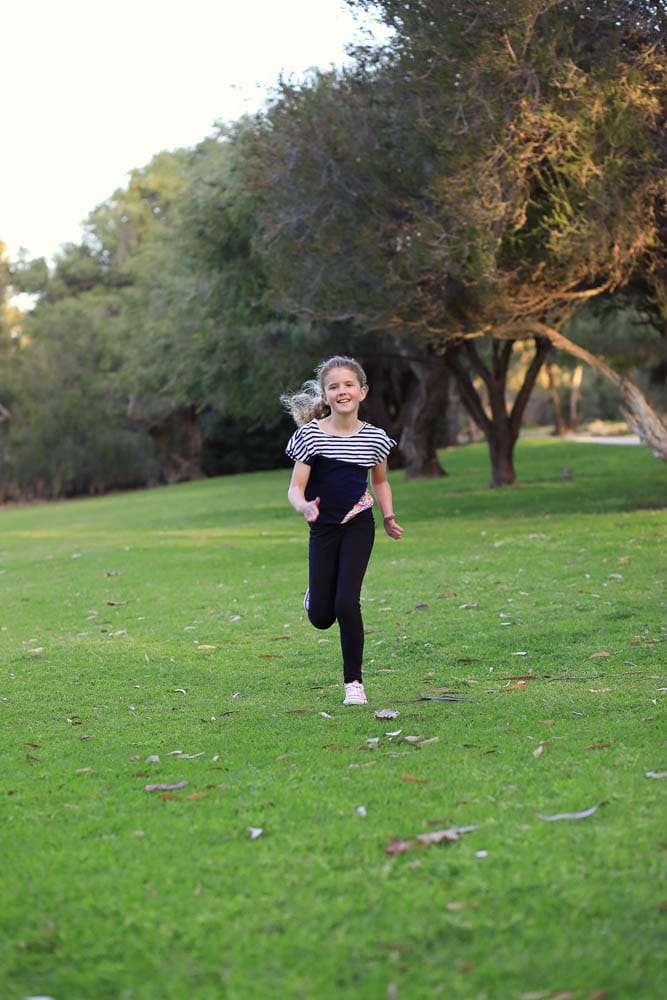
Canon 5D Mark IV (AI face detect AI servo) 85mm, f3.2, 1/640, ISO 640
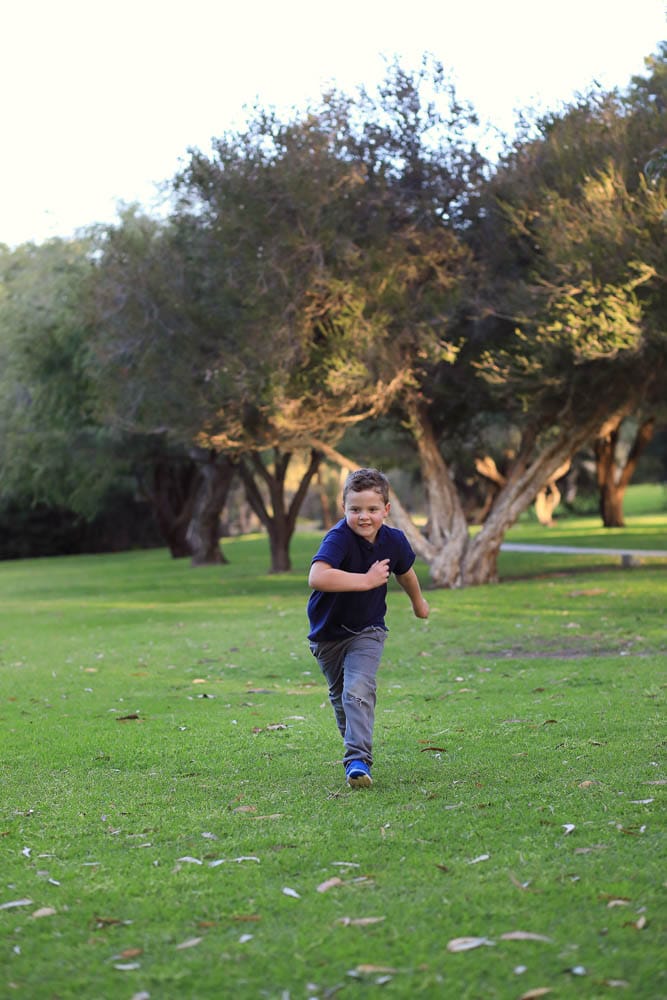
Canon 5D Mark IV (AI face detect AI servo) 85mm, f3.2, 1/640, ISO 640
It’s safe to say, I’m starting to get a little excited!
Being excited, I went for broke and really test the facial recognition focus by asking my subjects to run wildly side to side and see if the camera would find their face and lock focus fast. Despite a non challenging grass back ground, it’s safe to say the answer was no. Not one image caught focus. I do wonder if I had switched off AI face detect, perhaps in AI servo I may have had some luck. A test for another day. Either way, this failure is no disappointment. Telling the camera where to focus rather than letting the camera decide is a key concept I teach in nailing your family photographs.
We move down to the easy light of the shady, sandy river bank and back to my tried and true method of selecting the focal point with one shot AF. We spend some time on fun images, wrestling with Dad, cartwheels, family races on the beach.
I would say in my location portrait sessions, this kind of shooting accounts for at least 50% of the time. Even more when there is a toddler involved.
Again, the Mark IV responds quickly and every image is tack sharp.
After the kids have let of steam, it’s time to pause and attempt to stand still for family portraits.

Canon 5D Mark IV: 85mm, f4.0, 1/1000, ISO 640
Oh that’s right, I’m photographing kids! I’m rarely standing still, bracing the camera with proper handling and a steady grip. No, I’m jumping around, screaming like a banshee, peeking in and out from behind the camera or pretending to be a monkeys. This kind of crazy camera handling can lead to some camera shake. Often, I’ll need to shoot a group at f4.5 to keep everyone in focus and as I like to keep the ISO no higher than ISO1250 for image quality, shutter speeds can dip to 1/250sec or below. Particularly as the sun sets, or when shooting in deep shade. While 1/250sec is completely acceptable when you can stand still, when I need to be the crazy photographer, I’m often sacrificing the first image to camera shake.
I throw caution to wind and bump my ISO to ISO1600, in tonights light this allows me a luxurious shutter speeds of 1/640 and 1/800sec. All my images are wonderfully sharp and free of camera shake, but what of image quality? The detail in the eyes, the noise in the shadows? Would I be happy to put this portrait up as a professional portrait? Yes! The images look amazing! The faces and eyes are crisp and detailed, no softness at all, there is a small amount of noise in the image but it’s minor and swiftly dealt with by either DPP or Lightroom with little to no effect on eyes, smiles and fine detail. Such high quality useable files from 1600ISO, could be a game changer for my monkey dance shooting methods!

Canon 5D Mark IV: 135mm, f4.5, 1/640, ISO1600
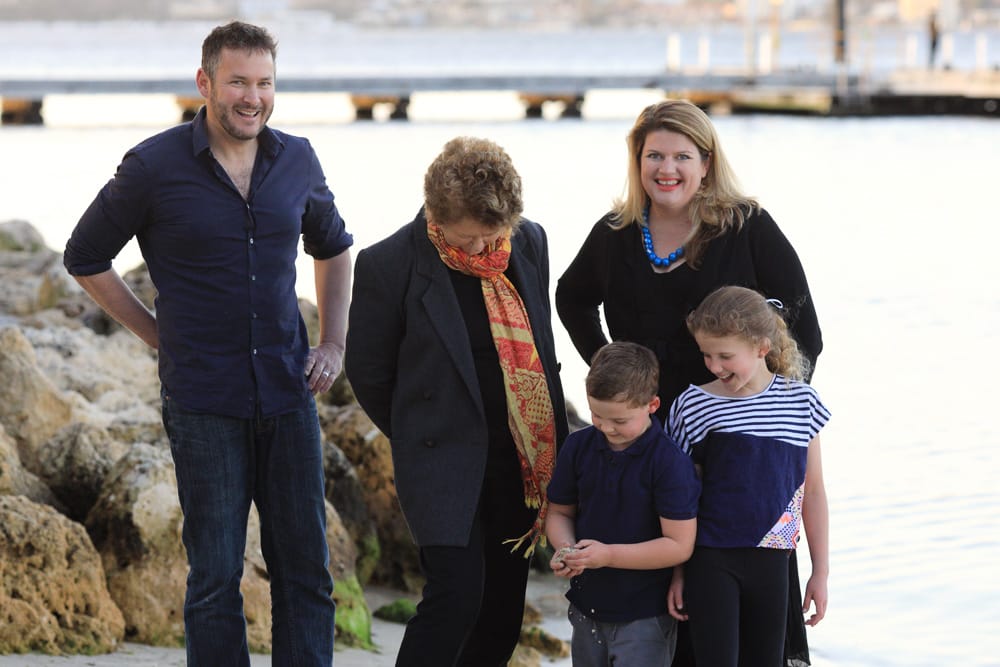
Canon 5D Mark IV: 135mm, f4.5, 1/800, ISO1600
Lastly as the sun hits the horizon, we head out of the shade and attempt some full back lit images with the sun in full view of the lens. With the 135mm on there is some hunting, there are occasional times when the camera didn’t lock focus, it was hard to say if it was the camera, lens or situation. Dad racing around with his kids, long zoom, super bright sun. There was only a few moments, and no missed shots. By the time I switched to the Mark III, the sun has dipped behind a cloud and doesn’t come back out, so I’m unable to directly compare.
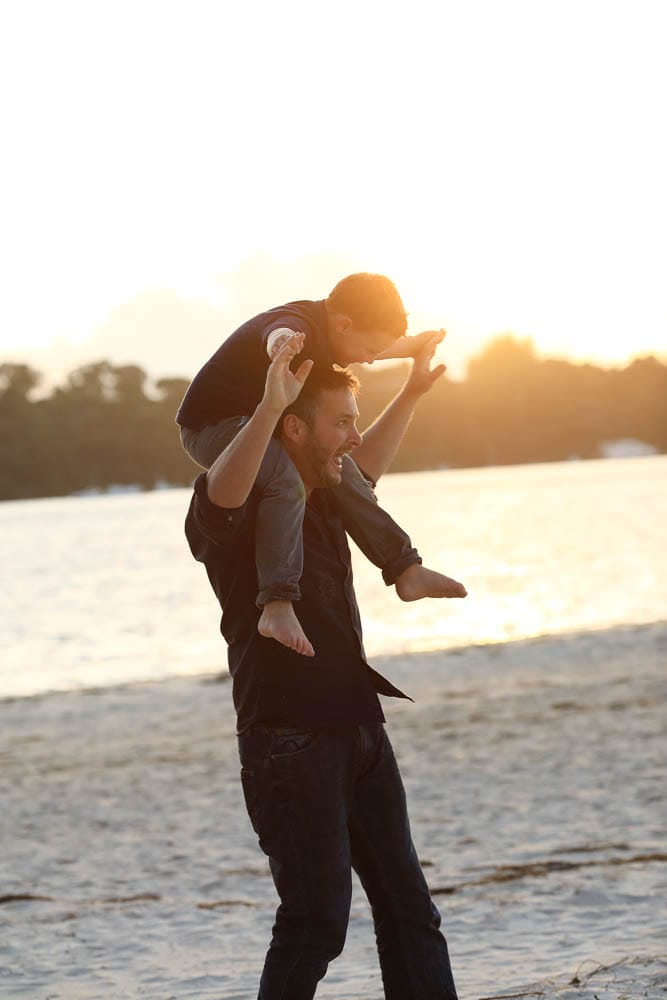
Canon 5D Mark IV: 135mm, f4.5, 1/640, ISO1600
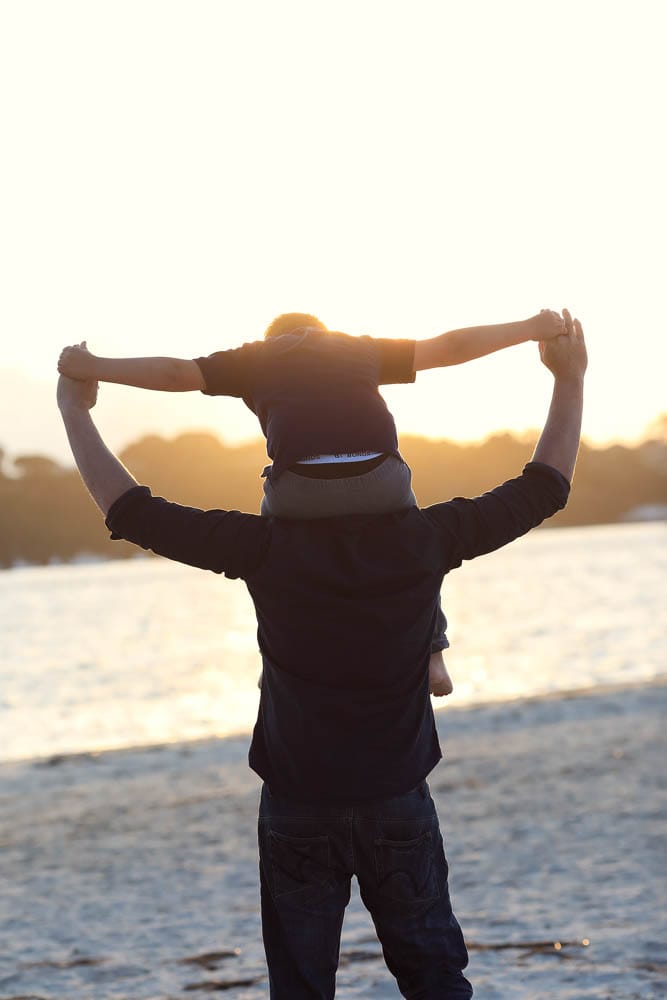
Canon 5D Mark IV: 135mm, f4.5, 1/640, ISO1600
We end the session in magical post sunset light, were it’s almost impossible to take a bad image. Suffice to say, straight out of camera, in that gorgeous pure light, I barely need to touch the images. They look amazing.
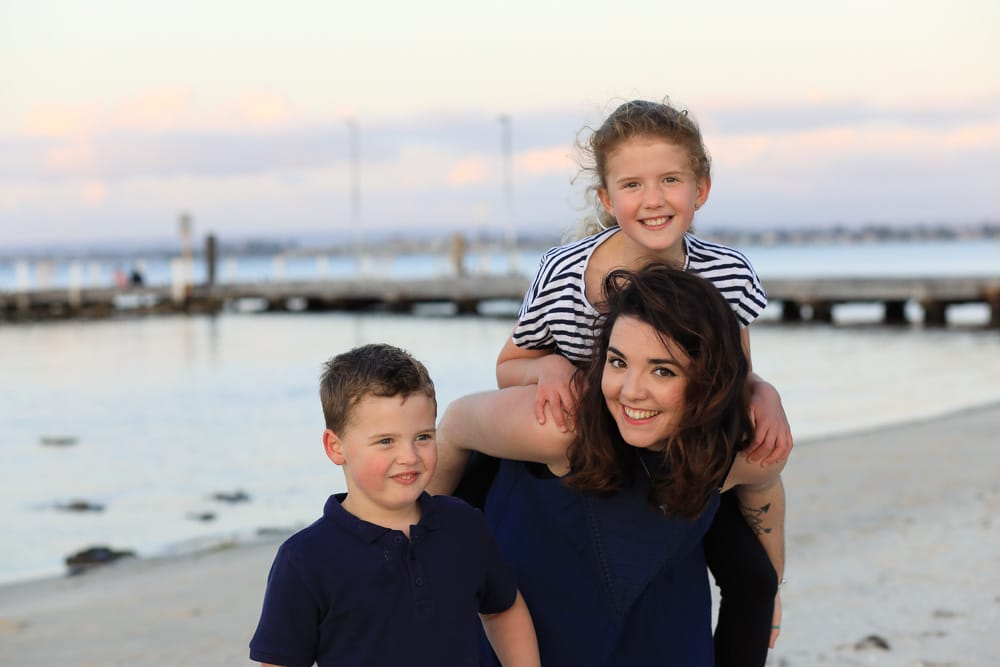
Canon 5D Mark IV: 85mm, f4.5, 1/500, ISO1000
Before I let my subjects leave for the evening, I persuade Charlotte to pose for a series of ISO comparison 85mm head shots, ISO1250 to 10,000. Running both files at the top end through DPP, with no noise filtering and no sharpening, I can see a significant improvement in image quality.
There’s two reasons for this improvement – One, at 100% there is visibly less noise. Two, because the Mark IV file is larger, cropping to the same area of the subject, the file is bigger, there are more pixels and thus less noise again!

Canon 5D Mark III: 85mm, f6.3, 1/1250, ISO10000
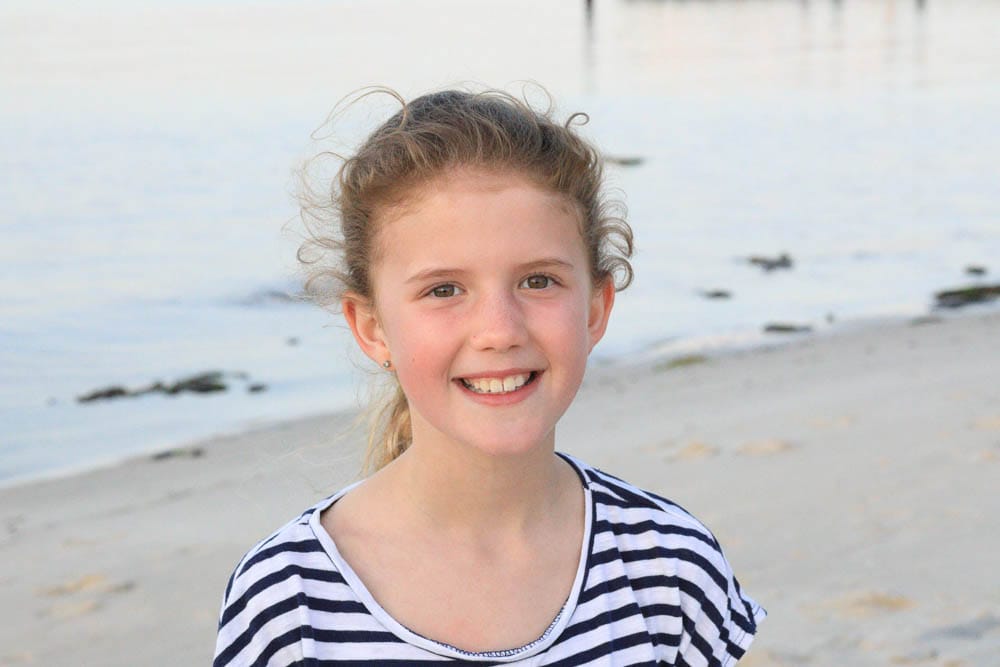
Canon 5D Mark IV: 85mm, f11, 1/400, ISO10000
The Canon EOS Mark III vs The Canon EOS Mark IV | Trial by two year old.
Natural light studio session, with a normal mostly uncooperative 2 year old
One of the many struggles of family studio photographer, is capturing the 2 year olds. Outside they can run, explore and just be. In a studio, they have to mostly look in one direction, generally hangout in a 3×2 meter zone and where possible perform for the camera. Two year olds, for the most part; don’t like to follow directions, don’t yet respond to bribes and are often moving fast or are only fleeting in the moment you’re after. I need to react fast and my gear needs do the same. My Mark III is great, but I’ll be honest, with 2 year olds in the studio, many images hit the scrap heap because simply they aren’t in focus, I’ve not been able to focus or react as fast as they are moving. Any improvements on the gear side will be a winner!
The lovely Alexis joined me in the studio to give the new Mark IV a “trial by two year old.” She did a brilliant job. At times she did what I asked, at times she did what ever she wanted. Sometimes she only wanted Mum and sometimes she wanted to escape the studio in tears. And she was utterly adorable! A perfect two year old.
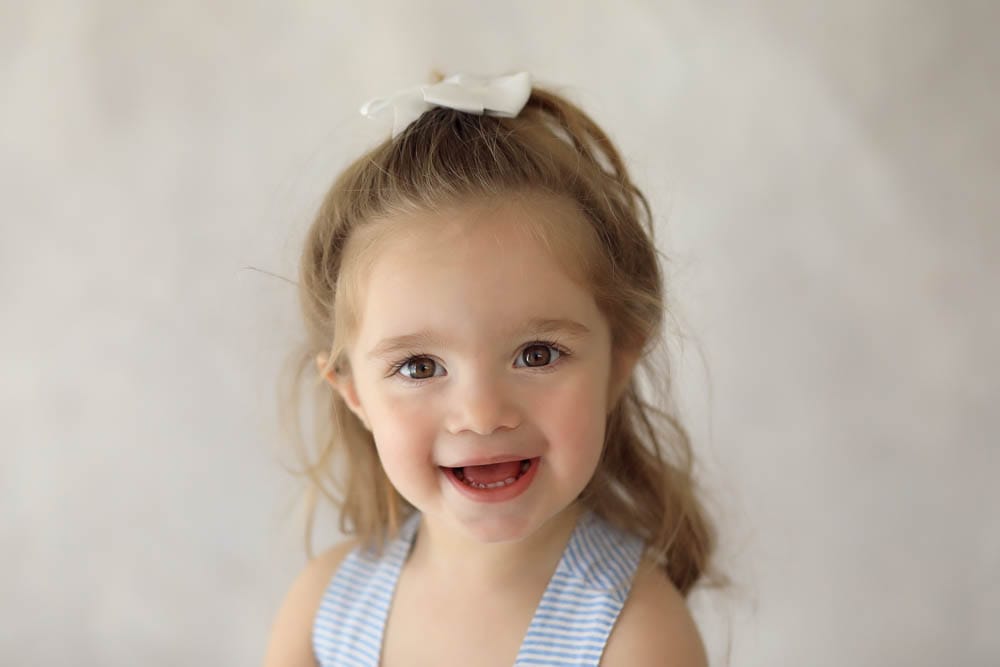
Canon 5D Mark IV: 85mm, f2.8, 1/800, ISO2000
To assess whether I felt the Mark IV offered an improvement over the Mark III for these troublesome sessions, I’m resorting to statistics.
Through out the shoot, I swapped camera bodies and kept the rest of the settings the same. After downloading the portraits, I assessed every image taken from both cameras and work out the percentage of out of focus images to focused images. Same session, same child, same lenses and settings.
The result?
- Mark IV 18% out of focus.
- Mark III 31% out of focus & 5% acceptable but not tack sharp.
OK so I know I’d need to shoot a lot more sessions to make sure the the trend continued before the figures would stand up in court. Luckily I’m a photographer not a scientist. And for the photographer, a 50% reduction in out of focus images from one of my trickiest session types? I am really excited now!
Oh and being able to crop even more than the Mark III, brilliant! The second portrait below was originally a horizontal shot with more space up top. This cropped image will easily print beautifully at 12×19″ with no resizing of the image needed. I’ve no doubt it would go larger.
The head shot of the girl above, is shot at ISO2000 – I mean wow! The portrait looks amazing and would look gorgeous printed large. I’d never have attempted that ISO for a paid studio session with the Mark III.
The Canon EOS Mark III vs The Canon EOS Mark IV | The Chubba Bubba
Natural light studio session with a gorgeous chubby bub!
Sitting babies are my favourite portrait subjects, they can’t crawl away and they all love me – almost with out exception! Smiles, giggles, drool, the odd tear (that’s mostly adorable), and yep sometimes there’s wee when you nude them up. What’s not to love? Except the wee. Technically, these sessions present very little challenge aside from ever so subtle camera shake from frequent peekaboo behind the camera – after all would you smile at a big black box?
This session, I simply wanted to get a feel for the camera, compare the resulting image qualities, to relax, enjoy and have a little play with some of the new features.
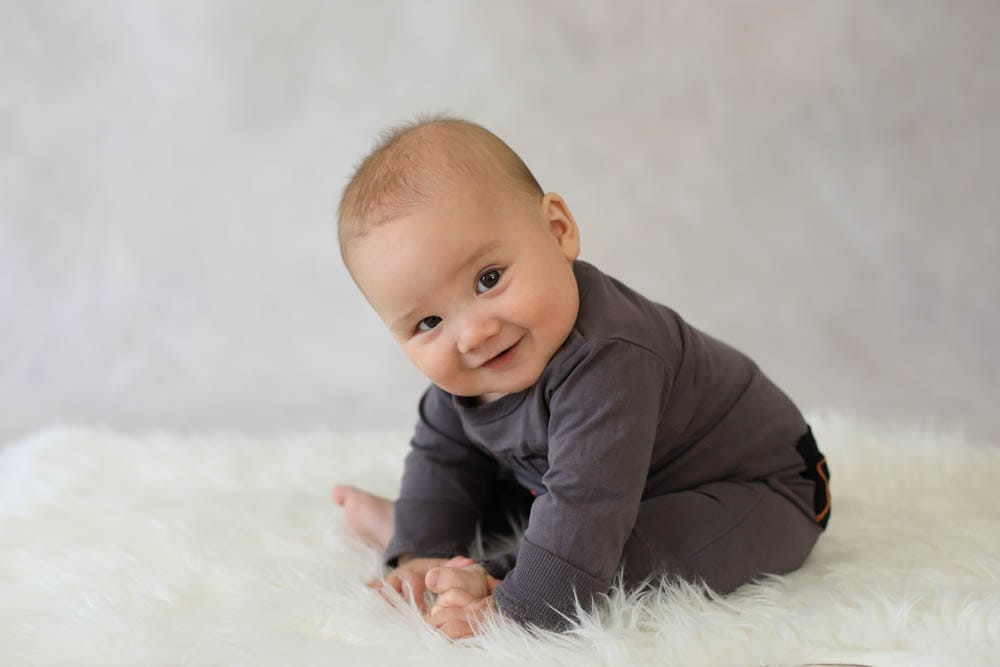
Canon 5D Mark IV: 50mm, f2.5, 1/320, ISO1000
First up, the only failure, the AI Face detect didn’t seem to be able to tell where the babies face was in the gorgeous bare image. It seemed just as likely to choose the chubby arm or tummy over the face. Again, not even an issue as I prefer to tell the camera where to focus.
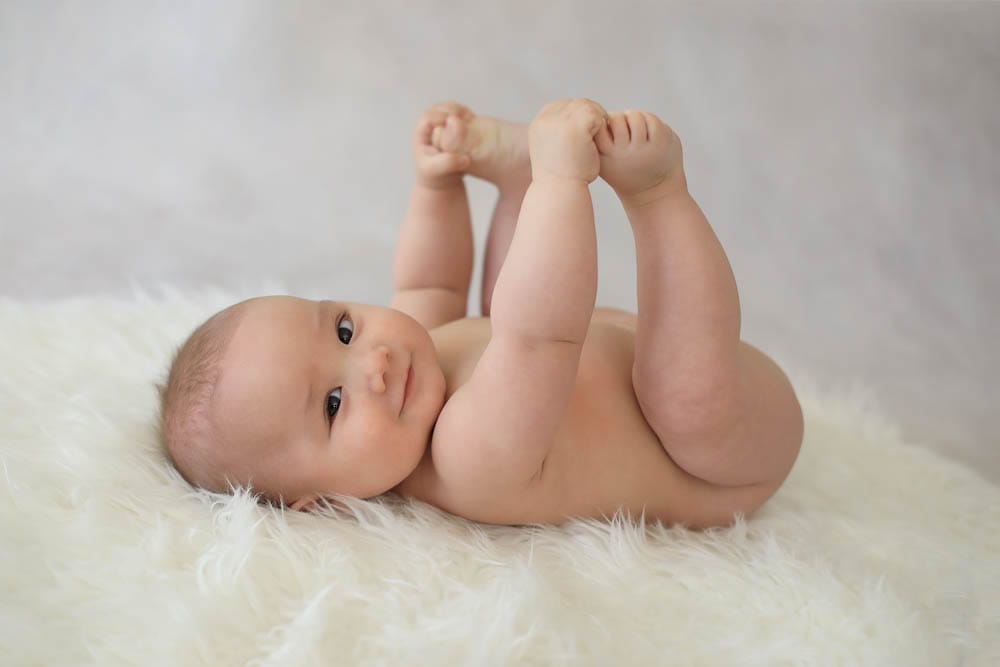
Canon 5D Mark IV: 50mm, f2.5, 1/320, ISO1000
I shot the whole session between 2.0 and 2.5, with either the 50mm or 85mm lens. There was very little room to move with depth of field. For a successful portrait, at the very least the front eye must be in focus, because it just has too.
Here’s where I made a mistake, I accidently shot the entire session using AI Focus instead of single shot AF. After realising my error, I thought I’d see if the camera reacted to the subtle movement of the baby in and out in each image and perhaps save some shots that otherwise might have been out of focus. After downloading and assessing the shots in DPP I noticed something interesting. While there were very few out of focus images, I found that when they were out of focus, often the red box (focus point) was not sitting over the eye. Interestingly, while in one shot AF mode on the Mark III, the red box (the active focus point) was nearly always over the eye, but the focus wasn’t always where the selected focus point was. With the Mark IV. Where the box was, the focus was,with a very small number of exceptions. This all suggests to me the Mark IV was indeed focusing and shooting much faster than the Mark III. It’s worth noting that I do not use back button focusing, I half press the shutter to focus then click the shutter to take the image.
I also had a little play with touch screen focusing, whilst it was fun, it wasn’t very practical for a normal portrait session simply because it slows the whole picture taking process down considerably. However for tripod shooting or video, I could see this to be a real advantage.
Dual Pixel Raw?
Lastly I shot all these sessions in Dual Pixel Raw (DPR). How could I not take the opportunity to perhaps save an out of focus image my making micro adjustments in post! While an exciting development, in my workflow I don’t feel it will be of much use, purely because it doubles the file size of every image to up to 75mb. Shooting and processing full time, these files sizes are simply too impractical to use day to day.
If I was shooting something special, perhaps a one off fine art creative work, then I might shoot in DPR and take advantage of ghost reduction, bokeh shift and micro focus adjustments.
I’ve shot a short video to help you take a closer look at the process.
My conclusion
So you may have guessed, I’ll be upgrading without hesitation from the Canon 5DM III to the Mark IV.
There were three main area’s that won me over
- The improvement in the focusing system: It’s proved itself to be faster and more accurate with way that I shoot.
- The high ISO performance: This will allow me to shoot with faster shutter speeds or wider apertures with barely any loss of image quality.
- The increased image sensor size: Giving me scope to step back and shoot wider if needed, safe in the knowledge I can crop in post and still have an acceptably sized image for professional portrait delivery.
Essentially, I can see I’ll miss less portraits and be able to capture more magical (and importantly saleable) moments in every session. An increased accuracy could also result in a shorted shooting time and will reduce my image processing time. There will be return on my investment in both time and sales.
I haven’t touched on the increased dynamic range of the Mark IV, or the image quality outside of the ISO purely because I am a Lightroom girl. At this stage Lightroom hasn’t released the updates to process the Mark IV files. While I could process images in Canons DPP software, I found it hard to compare between the two cameras in software I’m not an expert in. I’ll be sure to report back when the Lightroom update is out. Either way, best I go find my credit card. I’m in. My new friend the Canon EOS 5D Mark IV, is about to become my BBF.
If you’re upgrading and your in Australia, you can’t go past Team Digital in Perth, great pricing and customer service that’s second to none. And I’m not just saying that because they gave me a camera to play with for a day. Promise!

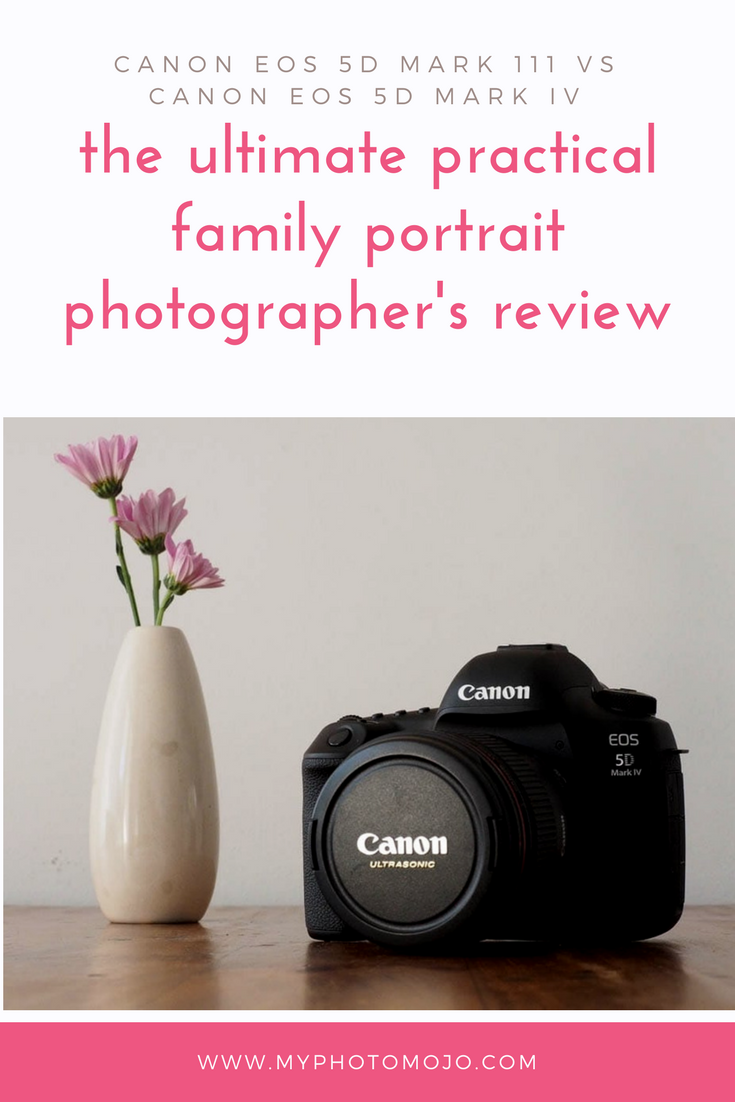
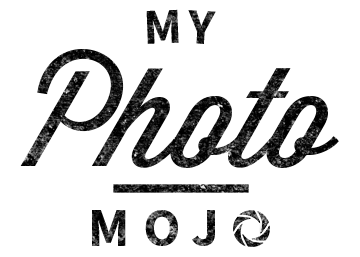
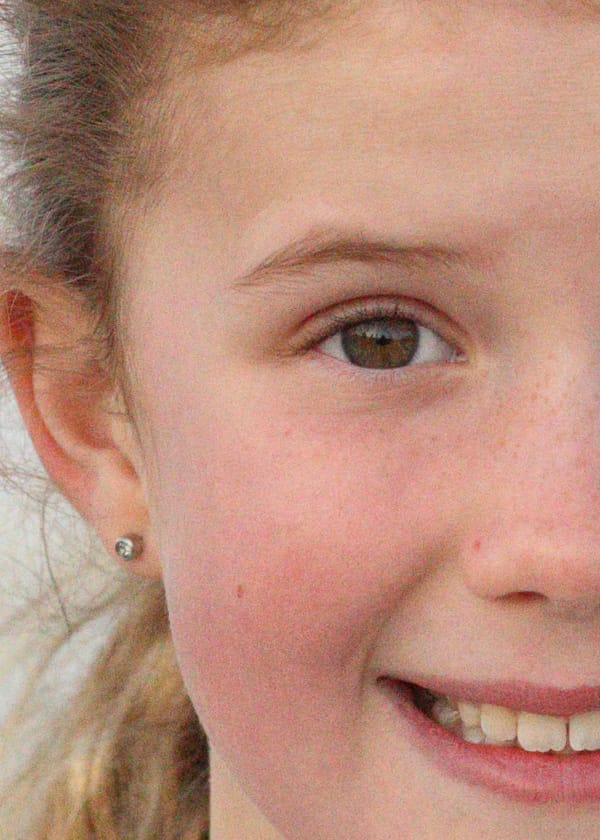
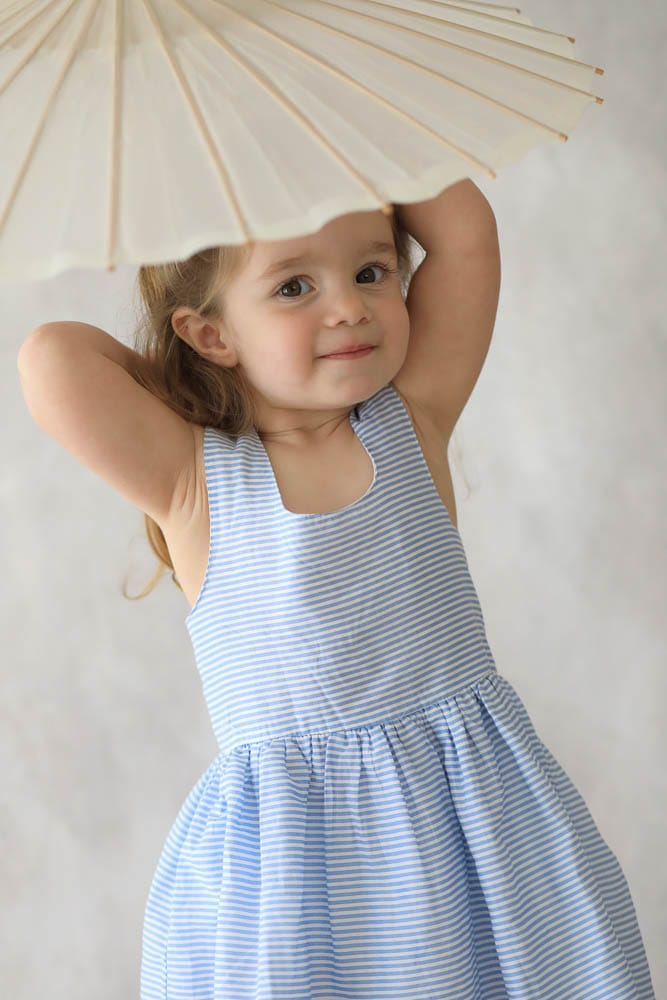
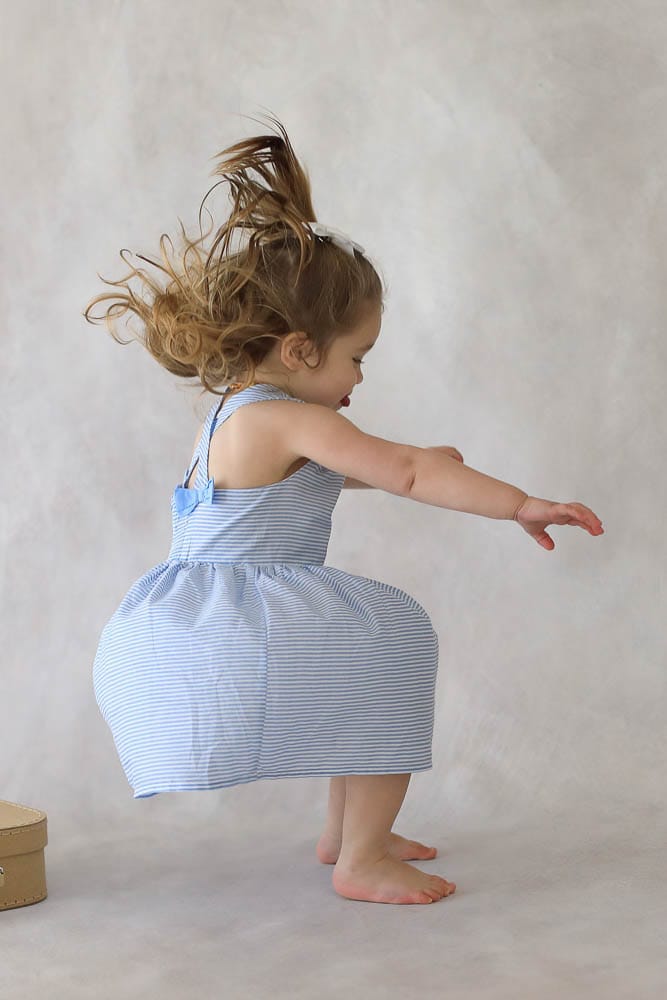

Great review – thanks Lisa
Thanks for your hard work putting this together, very helpful!
Awesome review Lisa
Great review, but I don’t like spending money and you’re making me want to! 😉
Thanks for the comparison! I’m gonna buy the Mark III
Hi, I have a quick question for you. I’m buying a new DSLR camera and I’m between Nikon and Canon. Do you think those are the best brands? And do you prefer one over the other? It seems like there are other cheaper options out there. I’m trying not to break the bank of course. I really appreciate the advice!